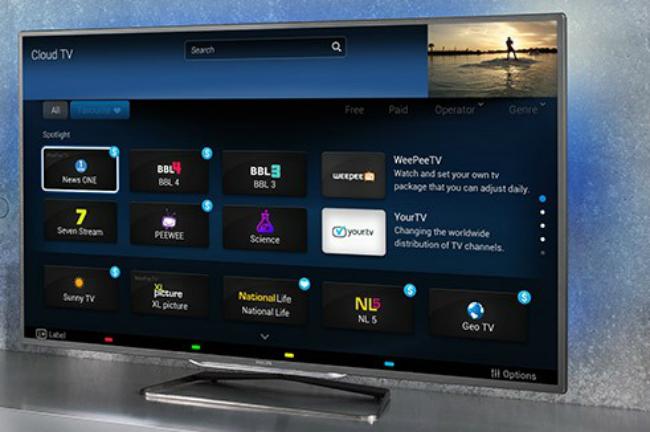
Today at IFA 2013 in Berlin, Phillips announced two new cloud service apps, Cloud Explorer and Cloud TV, both of which will be available on all Philips Smart TVs from 2012 or later. Partnering with Dropbox, Cloud Explorer will allow users to access files, media, and pictures on their TV from dedicated folders in their Dropbox accounts. Cloud TV, however, is a bit more ambitious, promising ‘hundreds of local, national, and special interest channels’ all from the convenience of your Philips Smart TV.
So is Philips’ new Cloud TV service the slayer of the cable dragon? Probably not. The service appears to depend on several caveats, most specifically where you live. While the official press release claims Cloud TV will offer a large selection of premium and non-premium channels ‘most of which’ are free, there’s also a short disclaimer at the bottom that reads ‘availability and specifications of services are country dependent’.
That could mean a lot of things, but it’s probably not an encouraging sign, especially for U.S. residents. Let’s be honest, aside from some BBC gems, the vast majority of TV content that most of us watch is created and broadcast here in the United states — and it would be very surprising to see much of it legally accessible for free online, especially on U.S. soil. Further driving skepticism is the fact that none of the channels offered are listed in the press release, or anywhere else we could find.
While we’re always hopeful for some magic beans in our search for free online content of the legal variety, the TV overlords have always kept a firm grasp on their content (see Aereo and FilmOn), and we can’t see that changing anytime soon. We’ll keep you posted as more details emerge, but don’t expect a Philips Smart TV to serve up ‘Game of Thrones’ for free anytime soon.
Editors' Recommendations
- Vizio brings new channels, features to its booming WatchFree+ streaming service
- NordVPN tries to scare you into using its new Apple TV app
- Roku bets big on its own TV brand — but is it a good idea?
- LG says its G3 OLED evo TV will be 70% brighter, with no visible wall gap
- YouTube TV adds a clock to its live guide; Apple TV gets the new UI


